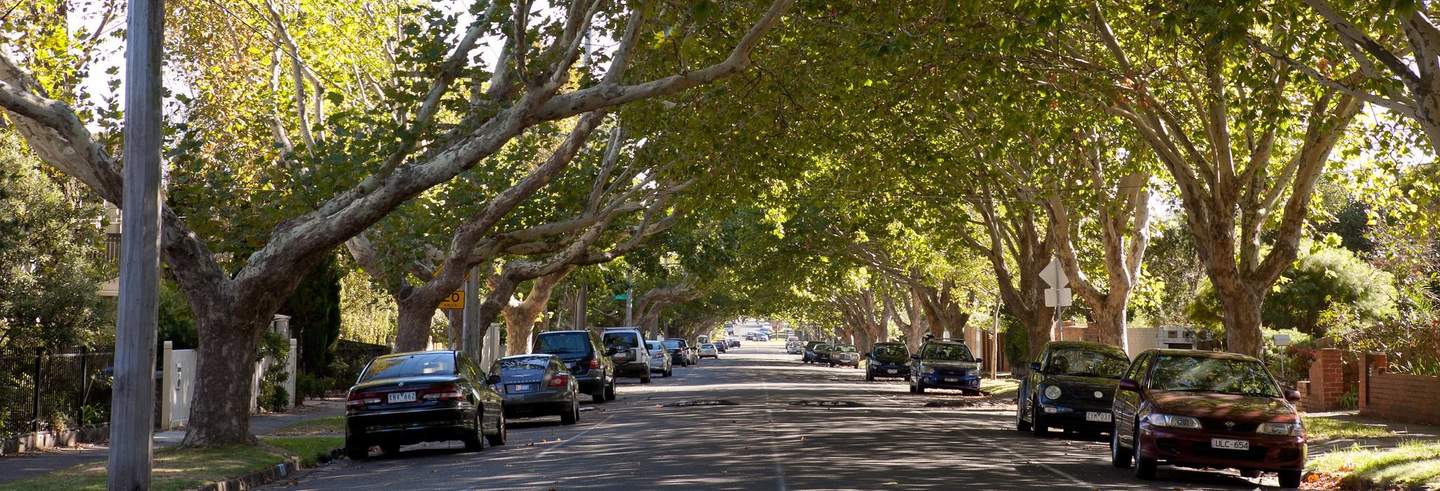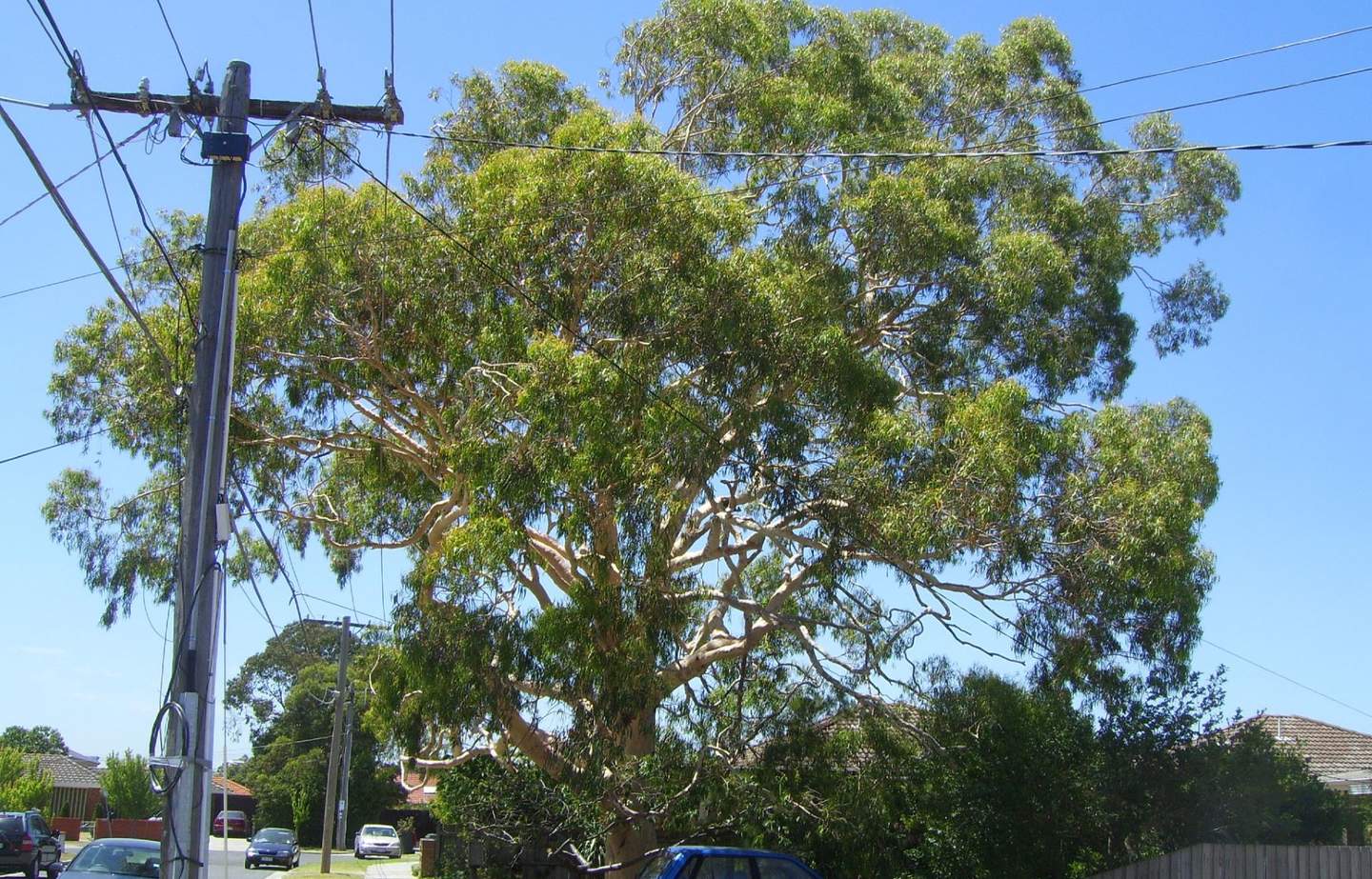Trees on private property
We know trees are important to our community, enhancing Bayside's livability and providing environmental benefits.
We are committed to working with the community to protect and enhance our tree canopy and vegetation on public and private land.
Bayside's trees are also protected by law and significant fines apply for destruction or illegal removal of trees.
Find out about:
- Why we're committed to protecting our trees
- Our responsibility
- Protected trees in Bayside
- Is your property subject to an overlay?
- Types of permits required
- Reporting illegal works

Why do we protect trees?
Our community highly values the green, leafy nature of Bayside and respecting the natural environment is a key priority of the 2050 Bayside Community Vision.
Trees are not only important to enhancing Bayside's immediate liveability but preserving them now is vital to our future.
Bayside 2050 Community Vision:
"Protecting biodiversity including preserving indigenous and marine flora and fauna and minimising our impact on the environment is important to our community."
"This includes stewardship of Bayside’s remnant heath and woodlands as well as our distinctive tree lined streetscapes, native vegetation, coastal and marine environments."
Additionally, in December 2019, Council voted unanimously to declare a Climate Emergency in Bayside.
Climate Emergency Action Plan:
"In Bayside, we are lucky to have access to iconic beaches, parklands and a significant number of tree-lined streets. Unfortunately, climate change is threatening these essential assets and the biodiversity they support."
Our Climate Emergency Action Plan steps out our urgent response to the impacts of climate change. With nearly 3,000 community members giving feedback to support the development of the Draft Climate Emergency Action Plan, the Bayside community has had a key role in identifying the top themes for Council to focus on in the Action Plan.
Protection of trees on both public and private land and the maintenance of Bayside's tree canopy cover will provide vital relief from the urban heat island effect, supporting the health of Bayside residents, and local ecosystems.
An increasing density of urban development means that the number of large trees on private land is decreasing, making the health and sustainability of these trees increasingly important.
Council has committed to providing high-quality living environments for residents, ratepayers and visitors. Bayside’s vegetation makes an important contribution to local amenity, sense of place, neighbourhood character, landscape values and cultural heritage. It enhances local climatic conditions by providing shade, wind protection and relief from the urban heat island effect. In some locations, vegetation also contributes to native fauna habitat and local biodiversity.
Our responsibility
Both landowners and Council are custodians of trees and vegetation on our property. To ensure we continue to maintain and enhance our natural environment including tree canopy cover, caring for trees is important to ensure the health and long-term benefits for the community and our environment.
Regular maintenance and pruning of trees on private property will ensure that residents in Bayside remain safe and can enjoy the benefits of tree retention and increased canopy coverage. Often this is as simple as raking leaves, cleaning rooves and gutters or the occasional pruning of trees. Regular pruning and maintenance of private trees by qualified arborists, where appropriate, will help to detect, minimise, and remedy issues that may impact a tree’s health and safety. A maintenance plan will help ensure ongoing benefits of healthy trees well into the future.
Permits may be required in some situations to prune or remove trees on private property.
Protect a tree in Bayside

You can support Council’s vision to create a greener Bayside and play an active role in environmental preservation by nominating a tree for our Significant Tree Register.
Types of Bayside overlays
Search the planning information map to find out if your property is within an overlay.
There are several types of overlays applied to areas of Bayside.
Heritage Overlay (HO) applies the State Government’s policies and reflects our objectives to protect historically significant buildings, precincts, trees, structures and/or places.
Significant Landscape Overlay (SLO) aims to identify, conserve and enhance the character of significant landscapes. A planning permit is generally required to construct a building or construct or carry out works including vegetation/tree removal and/or lopping.
Vegetation Protection Overlay (VPO) aims to protect areas of significant vegetation and fauna, particularly vegetation native to Australia. To ensure that development minimises loss of vegetation. To preserve existing trees and other vegetation. To recognise vegetation protection areas as locations of special significance, natural beauty, interest and importance. To maintain and enhance habitat and habitat corridors for indigenous fauna. To encourage the regeneration of native vegetation.
Search the planning information map
Permits required
Trees within an overlay
A permit is required to remove, destroy or lop any vegetation native to Australia in Beaumaris, Black Rock and parts of Cheltenham.
This does not apply to:
- The removal, destruction or lopping of vegetation which is less than 2 metres high or has a single trunk circumference of less than 0.5 metre at a height of 1 metre above ground level.
- The pruning of vegetation to remove that part of any branch which overhangs an existing dwelling or is within 2 metres of an existing dwelling.
Property protected by a planning permit
Generally, dwellings that are situated on land under 500 square metres and proposed to be constructed or extended are subject to planning approval. If your dwelling is one of two or more on the land, then any works or tree removal may require planning permission.
If your property is located within a vegetation protected area such as Beaumaris, Black Rock or parts of Cheltenham then planning permission is required to remove or lop any native tree to Australia.
For additional information about the planning process, please contact the Duty Planner on 9599 4444.
Trees not subject to an overlay
There are a number of other regulations that protect trees and vegetation throughout Bayside under planning controls and Council’s Local Law. For more information about which regulations may apply to you, visit our tree permit guide.
Trees on public land
Trees and vegetation on public land are protected by a number of regulations and cannot be cut or removed by members of the public.
You can nominate a tree on public land for our Significant Tree Register.
Reporting illegal works
Concerned that illegal works are being carried out? View our lists of tree permits approved within the last 12 months:
Please report illegal removal, destruction, pruning and interference with trees and vegetation by contacting our Investigations Unit on 9599 4444.
Tree vandalism
If you are aware of tree vandalism, then please report it via our online tree vandalism form.
Frequently Asked Questions
Do I need to apply for a permit if a tree is unsafe or dangerous?
A permit is not required if the work meets the following exemptions:
That part of a tree, or vegetation, that poses an immediate threat to persons or property can be removed without a permit. This applies to tree and vegetation protected by a planning overlay, planning permit or Council’s Local Law.
Only that part of the tree, or vegetation, that poses the immediate threat can be removed under this exemption. If permits are required for further work, they must be obtained prior to any additional works.
Call Council on 9599 4444 to discuss.
Which department should I go through for my permit application? Local Laws or Building & Planning?
To determine if a Planning or Local Law approval is required, visit our tree permit guide.
Search for planning information about a property to find out if your property is within an overlay.
How can I find out what species my tree is?
You can talk to your arborist or tree cutter about the species type or you can take a clipping to your local nursery who should be able to assist.
As a property owner, how can I ensure my tree stays healthy and safe?
Regular maintenance including the regular monitoring and care by a qualified arborist should ensure trees remain healthy and safe and any issues are identified early and remedied.
Where can I find information about trees in public spaces?
Look under 'Caring for public trees' on our Trees, Parks and Beaches page.